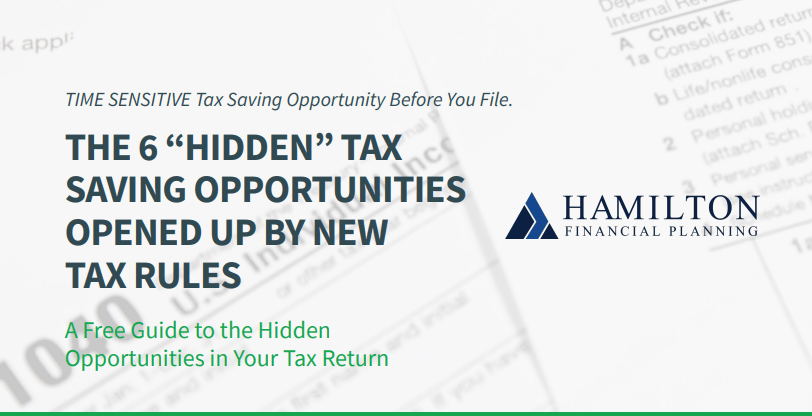
By Scott Hamilton
Tax season is here—are you prepared? One of the most effective ways to reduce your tax burden is to stay organized throughout the year. Keeping track of your income and expenses, as well as filing documents like receipts, is essential to any tax strategy. It’s also important to be aware of any changes in tax law so you can stay up to date with the latest regulations and deductions.
Taking advantage of available tax credits or deductions you may qualify for can help reduce your overall tax bill. For example, if you’re a business owner, you may be eligible for certain business-related credits and deductions. Similarly, if you’re a student, there may be educational credits or deductions available to you. Read more on the following tips to proactively reduce your tax bill and put more in your pocket.
Table of Contents
Build a Tax-Efficient Retirement Plan
When working with your financial advisor, retirement planning will often be a key point of conversation. By stress-testing your plan, you can quickly see if your current retirement accounts, savings rates, and other assets will be adequate for the retirement lifestyle you desire.
A direct way to reduce your tax bill is to contribute money into tax-deferred savings accounts, such as a 401(k) or IRA. But, in order to maximize your savings, you will need to determine both your current cash flow needs and your ideal retirement income. A proper financial plan will look at both factors and determine the best way to use your tax-deferred savings accounts to save you money both now and in the future.
For example, a $50,000 withdrawal from a Roth IRA will have a wildly different tax impact than that same distribution from a traditional IRA. Creating a tax plan can help you strategically withdraw from your various retirement accounts and reduce your tax liability.
Contribute to Your Health Savings Account
Health savings accounts (HSAs) offer triple the tax savings. This may sound too good to be true, but HSAs have no federal income tax, no state or local taxes, and no Federal Insurance Contribution Act (FICA) taxes. If you are eligible for an HSA, your money will be tax-deferred and can be withdrawn tax-free to pay for medical expenses.
Because HSA account balances roll over from year to year, by contributing to the limit each year, you can build up quite a nest egg to cover either current medical expenses or future medical expenses in retirement. Think of it as a Roth IRA for medical expenses.
As of 2023, HSA owners now have higher contribution limits to help them do just that. If you have individual coverage, you can contribute $3,850; for family coverage, the limit is $7,750. There is also an extra catch-up contribution of $1,000 available for those age 55 and older. If you can’t max out the yearly limit, attempt to contribute enough to cover your deductible and take advantage of your employer match, if available.
Use a Roth IRA to Transfer Wealth
Roth IRAs are an attractive savings vehicle for many reasons, including no required minimum distributions (RMDs), tax-free withdrawals after age 59½, and the ability to pass wealth tax-free to your heirs. Although Roth IRAs don’t have RMDs, other accounts like a traditional IRA might. This will force you to increase your income and could bump you up to a higher Medicare range, which can add $100 to $150 each month in premiums.
You probably know the effects taxation can have on your assets and the inheritance you hope to pass on to future generations. For example, if you passed down a traditional IRA, non-spouse beneficiaries used to be able to stretch the distributions from that account over the beneficiary’s life, but now they have to liquidate the account within 10 years of inheriting it (with some exceptions), thanks to the new SECURE Act. This significantly decreases the value of the account due to the amount of taxes paid in a short time. But, if you pass down a Roth IRA instead, there is no income tax due on the distributions, as long as the account is held for more than five years and the account holder is 59½ or older.
If you have traditional IRAs already or earn too much to qualify for a Roth IRA, consider a Roth conversion to remedy the tax loss. The basic process to convert your IRA is to withdraw the amount you’d like to invest in a Roth, pay the tax owed on the distribution, then reinvest it into a Roth account. Be sure to work with a professional to determine the best time to do this so you don’t push yourself into a higher tax bracket or are forced to use funds from the account to pay the extra taxes on the distribution.
Deduct Eligible Charitable Contributions
Annual gifts to qualified charitable organizations may be deemed an eligible itemized deduction. Under the Tax Cuts and Jobs Act, fewer taxpayers itemize deductions due to the doubling of the standard deduction. Regardless, charitable giving is still a useful tax-minimization strategy.
In order to benefit from charitable giving, you’ll have to plan ahead. With the new higher standard deduction, you’ll need to make sure your total deductions for the year, giving included, exceed $13,850 for an individual filer and $27,700 for those married filing jointly. If your deductions fall below this amount, consider bunching your giving or doing several years’ worth of giving in one year.
You may also want to look into using a donor-advised fund to combine all charitable contributions in a year and then distribute the funds to various charities over several years. With this strategy, you may be able to itemize deductions in one year and take the standard deduction in the following years so you can achieve a tax benefit that you may not have received otherwise.
Review Your Previous Tax Returns
You can learn a lot from the past. Look at your previous tax returns with a professional to search for deductions or credits you may have missed, opportunities to lower taxable income, and plan for the next tax season. Take these factors into consideration when making a tax plan for the future:
- Review notable tax law changes for 2023 that may affect you
- Review your capital gains and losses
- Review your retirement savings options
- Consider Roth IRA conversions
- Consider additional year-end tax strategies
- Understand potential tax law proposals
Get Ahead With Tax Planning
Tax planning can be a great way to save money in your financial plan, but it’s important to understand the available options and how they uniquely fit into your long-term goals. Don’t underestimate the value of partnering with a trusted financial professional who can provide personalized advice for your specific situation while creating an effective tax strategy.
At Hamilton Financial Planning, our experts have years of experience in financial and tax planning, so you can rest assured you’re getting the right advice that is best suited to your needs. We can provide you with guidance and strategies to help you move toward beating the tax game and increasing your savings. If you’d like to learn which strategy is right for you, we encourage you to schedule a complimentary get-acquainted meeting online or reach out to us at 512-261-0808 or scott@hamiltonfinancialplanning.com.
About Scott
Scott Hamilton is founder and chief financial officer at Hamilton Financial Planning, a wealth management firm that specializes in providing comprehensive financial planning for retirees. With over 20 years of experience in the financial industry, and having completed over 250 financial plans for retirees across all industries, but mostly the oil and gas industry, Scott is passionate about providing his clients with the tools and insight they need to achieve their financial goals. He has a Bachelor of Business Administration in finance from Texas State University and an MBA in international finance from Pepperdine University. Scott has also been happily married to his wife, Gayle, for over 25 years. To learn more about Scott, connect with him on LinkedIn.

